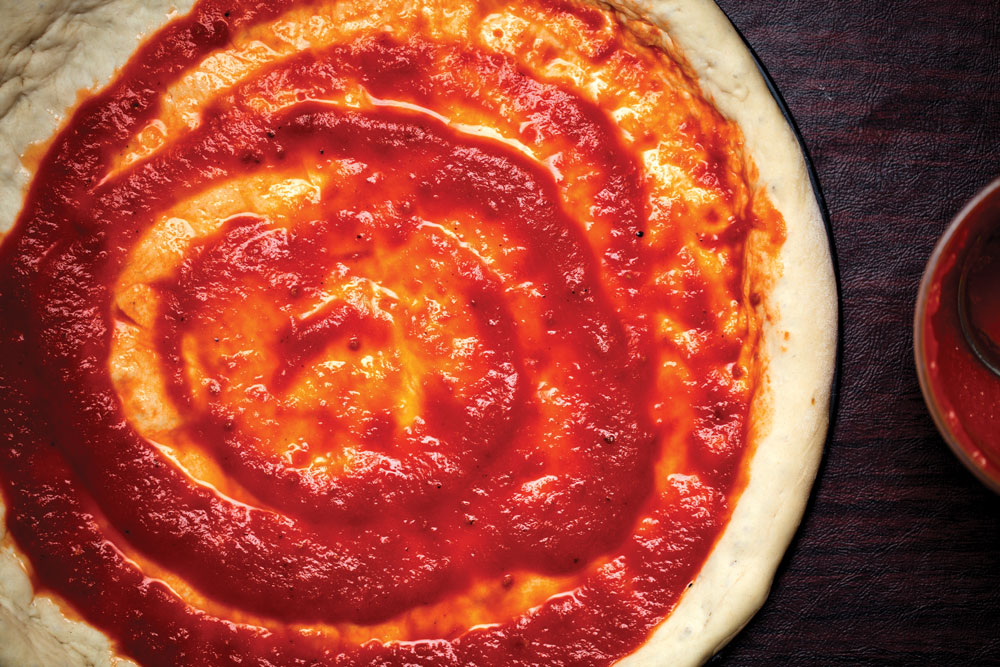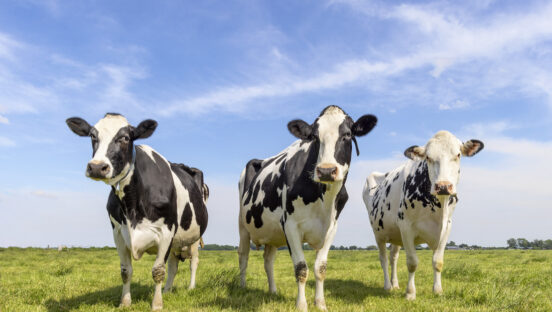The tomato is a little red miracle. A nutritional powerhouse, it provides antioxidants and protection against cancer and strengthens the heart. It can even prevent constipation. And the best tomatoes are positively loaded with flavor. A high-quality tomato packs five tastants—sweet, sour, salty, bitter and savory—into every bite.
In short, the tomato is a superfood. And, as pizza professionals, we want to do everything in our power to capitalize on the tart and tangy deliciousness of this most glorious of fruits. So it’s important to understand how heat can affect tomato flavor when you’re preparing a sauce. Here’s a quick overview, adapted from John Correll’s book, The Encyclopizza: The Guide to Pizza Ingredient Purchasing and Preparation.
Both time and temperature make a difference in your sauce, but temperature can do the most harm to the flavor. When there’s a choice of either reducing time or temperature, reducing temperature will usually produce the best-tasting sauce.
More Heat Equals Less Flavor
Heat is the single biggest factor affecting tomato flavor. The more heat that’s applied to a tomato product—whether in the cannery or the kitchen—the greater the loss and distortion of flavor. (Mathematically, heat is defined as cooking temperature multiplied by cooking time.) Heat affects tomato flavor in two ways. First, it decreases “fresh flavor” compounds. Second, it increases “cooked flavor” compounds.
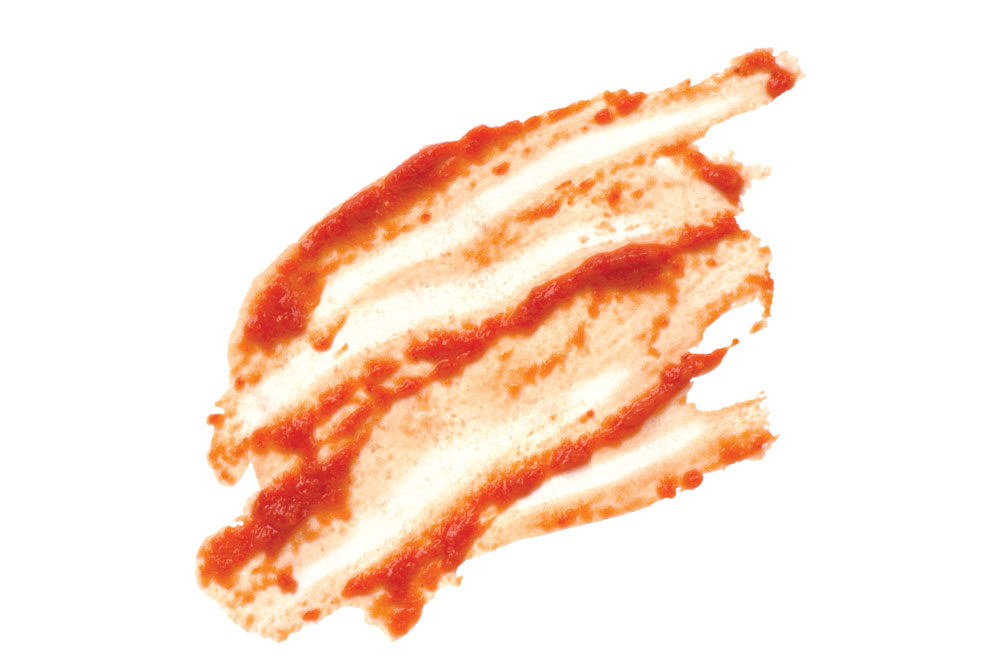
Decrease in Fresh Flavor
Fresh tomato flavor is derived from volatile compounds—specifically, C-3-Hexenal and Z-3-Hexenal. Heat increases their volatility. During heating, these compounds escape into the atmosphere, creating the wonderful tomato aroma that fills a kitchen when there’s a simmering sauce pot. Unfortunately, this also results in a corresponding flavor loss in the sauce.
Both heating time and temperature affect flavor loss, but in different amounts. The relationship between heating time and flavor loss is arithmetic. For example, given the same temperature, a 10% increase in heating time will result in a 10% increase in the amount of flavor loss. However, the relationship between temperature and flavor loss is logarithmic. Specifically, for each 18°F (or 10°C) increase in cooking temperature, the rate of flavor loss doubles! So, given the same amount of time, sauce that’s cooked at 198°F will lose twice as much flavor as sauce cooked at 180°F, which will lose twice as much flavor as sauce that’s cooked at 162°.
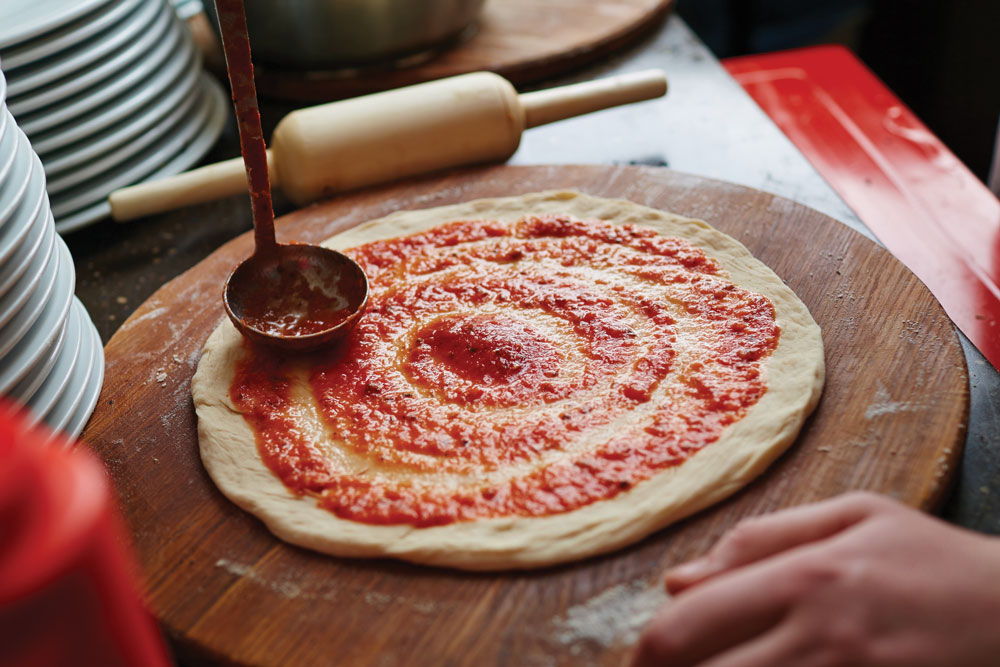
Increase in Cooked Flavor
So what about that aforementioned “cooked flavor”? Prolonged heat causes tomato sugars to caramelize. In sufficiently large quantities, caramelized sugar produces a burned flavor. Heat also causes other flavor compounds to change their composition (due to what is known as the Maillard reaction). The result is an increase in compounds—specifically, acetyle pyrolle and furfurals—that produce a “cooked tomato” flavor. That typically means a burned or bitter flavor, which won’t go over too well with your guests.
Finally, continued heating turns your sauce color from bright red to brownish red. That’s why color is often used as a key indicator of sauce quality or freshness.
In the final analysis, both time and temperature make a difference in your sauce, but temperature can do the most harm to the flavor. To achieve a sauce of maximum flavor, the heating time and temperature—in both the cannery and the kitchen—should be kept to a minimum. And when there’s a choice of either reducing time or temperature, reducing temperature will usually produce the best-tasting sauce.
John Correll is a veteran pizza industry consultant, author and founder of Correll Concepts (correllconcepts.com).
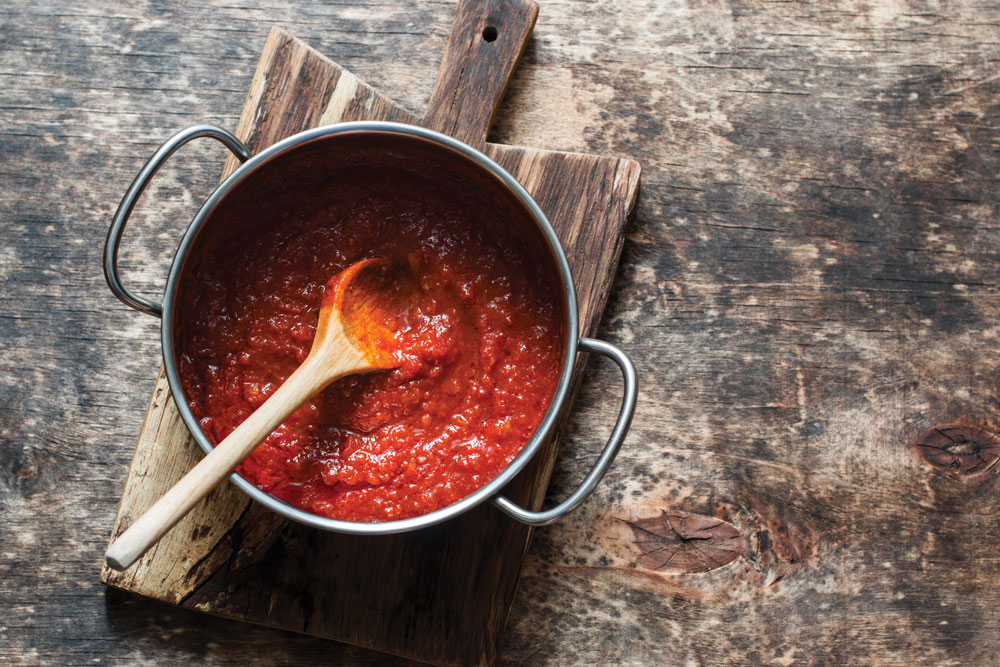
Basic Pizza Sauce
Recipe by Tom Lehmann and Jeff Zeak
Ingredients:
- 2 #10 cans tomato paste
- 1 #10 can diced tomatoes
- 5 #10 cans tomato sauce
- 4 #10 cans crushed tomatoes
- 24 oz. olive oil
- 8 oz. salt
- 5 oz. garlic powder
- 5 oz. minced onion (dry)
- 2 oz. oregano
- 1½ oz. black pepper
- 16 oz. Parmesan cheese
- 6 oz. Romano cheese
- Water: Adjust water content as necessary to obtain desired consistency. Typically, only two or three #10 cans of water are required.
Directions:
- Add all ingredients together and mix until well-blended. (Do not precook sauce.) Refrigerate and use as needed. Sauce will keep for several days under refrigeration.
- For a spicy sauce, add dehydrated red pepper with seeds. Adjust the amount added to taste.

